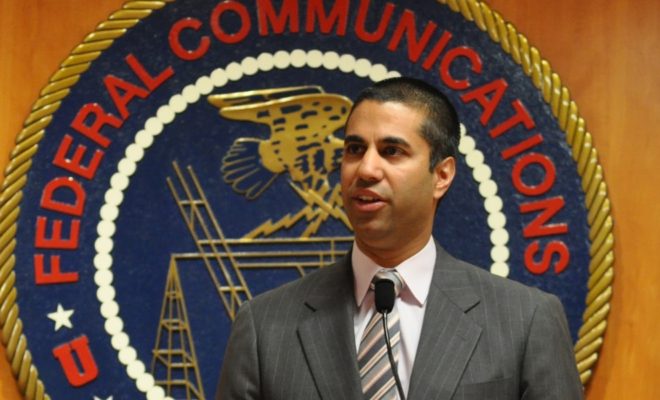New rules being proposed by the Federal Communications Commission (FCC) could make the process by which the telecom industry builds infrastructure all over the United States significantly easier. The FCC released a Notice of Proposed Rulemaking (NPRM) last Friday, dubbed Accelerating Wireless Broadband Deployment by Removing Barriers to Infrastructure Investment, a formal step that will begin the process of reducing regulatory requirements for telecommunication infrastructure construction.
Commenting on the NPRM, FCC Chairman Ajit Pai used the example of preparation for data demand during the Super Bowl at NRG Stadium, stating “Meeting this commitment was much harder than it should’ve been. For instance, one company ended up paying thousands of dollars per utility pole for purposes of meeting historic preservation requirements,” Pai continued, “Now, it’s hard to imagine that there is much to preserve, historically speaking, in the parking lot of NRG Stadium. After all, initial construction started in the early 2000s.” The FCC under Chairman Pai hopes to reduce such regulations.
As it stands now, there are many kinds of regulation that can be used to hinder or halt the work that many tower climbers and developers want to do. One of the most endemic of the problem is the period of time in which a multiplicity may decide to prevent work from moving forward in any capacity to a tower, otherwise known as a “Shot Clock”. During that time, the local government may levy any complaints or concerns for the proposal, and choose to approve or deny it. If that period expires and no formal decision has been made, then the construction is supposed to be able to proceed as planned. For simple modifications that do not make any major changes to the tower structure, it can take 60 days. If it’s a new carrier for the site, then this period of time is extended to 90 days. And in the case of a new tower being constructed in a new site, it’s extended even longer, all the way to 150 days. However, the “Shot Clock” will sometimes expire, and the local government will instead take the case to court instead of allowing work on the tower to proceed. However, the FCC believes this may be obstructing too much work that could otherwise be moving forward.
Instead, they want to minimize the wait time within the time gap to a general 60 day period on any tower work, up to and including construction on a new tower. They also want to clarify the language used in these situations, helping keep unnecessary legal battles from taking place. This will help prevent local and state moratoria from being used to impede wireless infrastructure deployment.
The FCC also sees this as an opportunity to prevent townships from stalling work regarding small cell sites as well. In some towns and cities, the work technicians trying to bring small cells to the area are being slowed down because the town in question will place a temporary halt on application considerations after officials become overwhelmed by the extent of the work being done. This could see work halted on the small cell installation, which only adds to the strain on the current wireless connection and exasperates the potential threat of the service being affected. But by reducing the “Shot Clocks” even further for small cells, as the FCC is proposing, that time window can be closed and work can begin more earnestly.
These changes, among a host of other suggestions in the NPRM, could allow for a greater number of towns to receive the advances in wireless capability they’ve been demanding. And it will help members of the telecom industry to expand their work further around the nation.

